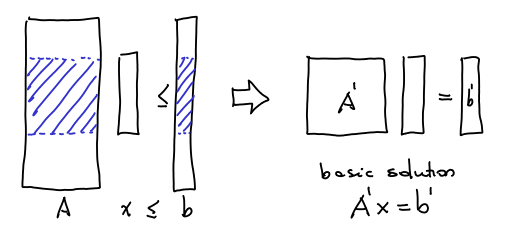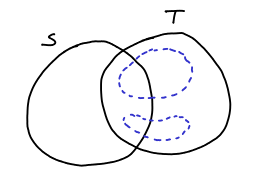Probability Puzzles
Today in a dinner with Thanh, Hu and Joel I heard about a paradox I haven’t heard so far. Probability is full of cute problems that challenge our understanding of the basic concepts. The most famous of them is the Monty Hall Problem, which asks:
You are on a TV game show and there are
doors – one of them contains a prize, say a car and the other two door contain things you don’t care about, say goats. You choose a door. Then the TV host, who knows where the prize is, opens one door you haven’t chosen and that he knows has a goat. Then he asks if you want to stick to the door you have chosen or if you want to change to the other door. What should you do?
Probably you’ve already came across this question in some moment of your life and the answer is that changing doors would double your probability of getting the price. There are several ways of convincing your intuitions:
- Do the math: when you chose the door, there were three options so the prize is in the door you chose with
probability and in the other door with probability
(note that the presenter can always open some door with a goat, so conditioning on that event doesn’t give you any new information).
- Do the actual experiment (computationally) as done here. One can always ask a friend to help, get some goats and perform the actual experiment.
- To convince yourself that “it doesn’t matter” is not correct, think
doors. You choose one and the TV host open
of them and asks if you want to change or stick with your first choice. Wouldn’t you change?
I’ve seen TV shows where this happened and I acknowledge that other things may be involved: there might be behavioral and psychologic issues associated with the Monty Hall problem – and possibly those would interest Dan Ariely, whose book I began reading today – and looks quite fun. But the problem they told me about today in dinner was another: the envelope problem:
There are two envelopes and you are told that in one of them there is twice the amount that there is in the other. You choose one of the envelopes at random and open it: it contains
bucks. Now, you don’t know if the other envelope has
bucks or
bucks. Then someone asks you if you wanted to pay
bucks and change to the other envelope. Should you change?
Now, consider two different solutions to this problem: the first is fallacious and the second is correct:
- If I don’t change, I get
bucks, if I change I pay a penalty of
and I get either
or
with equal probability, so my expected prize if I change is
, so I should change.
- I know there is one envelope with
and one with
, then my expected prize if I don’t change is
. If I change, my expected prize is
, so I should not change.
The fallacy in the first argument is perceiving a probability distribution where there is no one. Either the other envelope contains bucks or it contains
bucks – we just don’t know, but there is no probability distribution there – it is a deterministic choice by the game designer. Most of those paradoxes are a result of either an ill-defined probability space, as Bertrand’s Paradox or a wrong comprehension of the probability space, as in Monty Hall or in several paradoxes exploring the same idea as: Three Prisioners, Sleeping Beauty, Boy or Girl Paradox, …

There was very recently a thrilling discussion about a variant on the envelope paradox in the xkcd blag – which is the blog accompaning that amazing webcomic. There was a recent blog post with a very intriguing problem. A better idea is to go there and read the discussion, but if you are not doing so, let me summarize it here. The problem is:
There are two envelopes containing each of them a distinct real number. You pick one envelope at random, open it and see the number, then you are asked to guess if the number in the other envelope is larger or smaller then the previous one. Can you guess correctly with more than
probability?
A related problem is: given that you are playing the envelope game and there are number
and
(with
). You pick one envelope at random and then you are able to look at the content of the first envelope you open and then decide to switch or not. Is there a strategy that gives you expected earnings greater than
?
The very unexpected answers is yes !!! The strategy that Randall presents in the blog and there is a link to the source here is: let be a random variable on
such that for each
we have
, for example, the normal distribution or the logistic distribution.
Sample then open the envelope and find a number
now, if
say the other number is lower and if
say the other number is higher. You get it right with probability
which is impressive. If you follow your guess, your expected earning is:
The xkcd pointed to this cool archive of puzzles and riddles. I was also told that the xkcd puzzle forum is also a source of excellent puzzles, as this:
You are the most eligible bachelor in the kingdom, and as such the King has invited you to his castle so that you may choose one of his three daughters to marry. The eldest princess is honest and always tells the truth. The youngest princess is dishonest and always lies. The middle princess is mischievous and tells the truth sometimes and lies the rest of the time. As you will be forever married to one of the princesses, you want to marry the eldest (truth-teller) or the youngest (liar) because at least you know where you stand with them. The problem is that you cannot tell which sister is which just by their appearance, and the King will only grant you ONE yes or no question which you may only address to ONE of the sisters. What yes or no question can you ask which will ensure you do not marry the middle sister?
copied from here.



